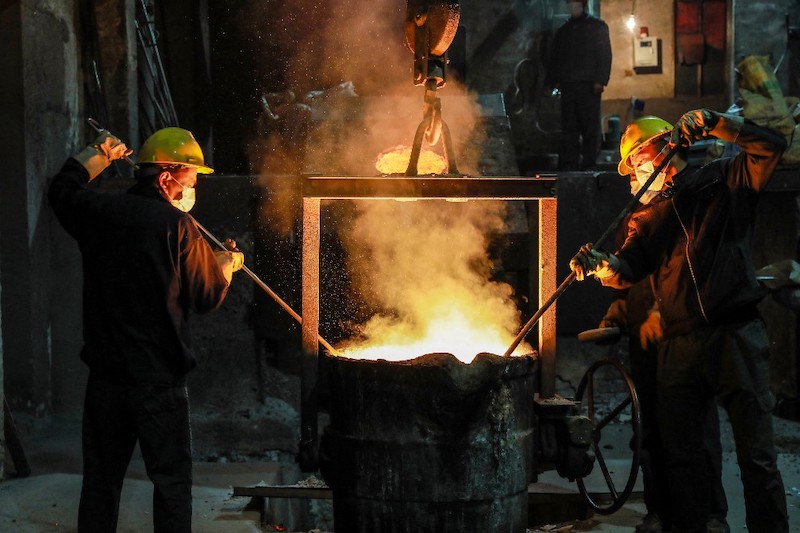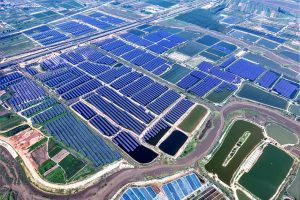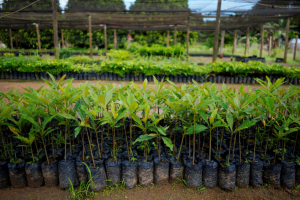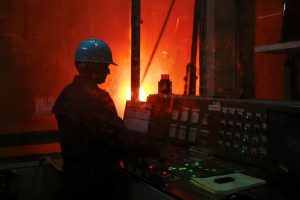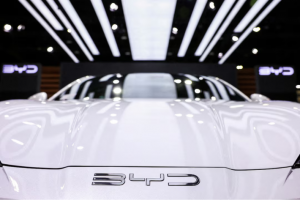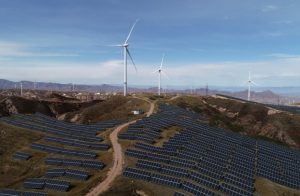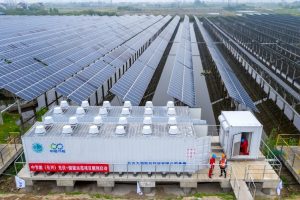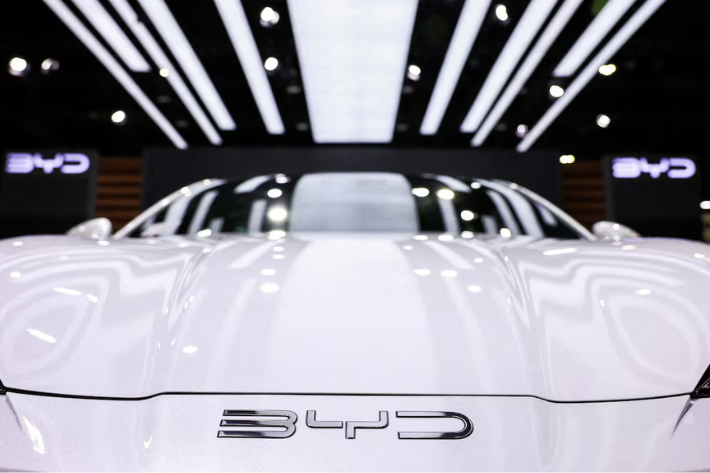Asian steelmakers are among the worst performers at making the switch to renewables, according to a new survey that found many of them are still entirely dependent on fossil fuels for production.
Steel production accounts for about 8% of global carbon emissions and about 30% of emissions from industry.
A majority of the sector’s emissions are tied to its use of metallurgical coal, which is a key source of heat and carbon needed to turn iron ore into steel.
Also on AF: Hope Grows China Emissions May Have Peaked – or Will Next Year
Coal-fired blast furnaces — that melt iron ore and create pig iron — produce 2 metric tons of CO2 for each ton of output.
That has put steelmaking in the focus for global climate activists and policymakers, as the world races to make a critical energy transition.
But a survey by Sydney-based climate group Action Speaks Louder (ASL) showed on Friday that some of the industry’s biggest names still relied on fossil fuels for 99% of their energy over 2022-2023.
Steelmakers from South Korea, India, Japan and China were among the biggest laggards among the 18 firms ASL surveyed.
At the bottom of the list were South Korean steelmakers Hyundai Steel, Dongkuk Steel and Posco whose share of renewables in energy use stood at zero or close to zero.
That was even as firms produced large quantities of steel through electric arc furnaces (EAFs) that can be powered with renewables.
Major firms from India — which is the world’s second-largest maker of steel — also fared poorly. India’s biggest steelmaker — Tata Steel — used renewables for a meagre 0.1% of its total energy needs.
Meanwhile, state-owned Steel Authority of India sourced just 0.04% of its energy from renewables.
Similarly, JSW Steel — the third-biggest Indian steelmaker — sourced 0.4% of its energy from renewables. The company told Reuters It aims to run all its steel operations using clean energy and waste gas by 2030.
Japan, China also on back foot
Similar patterns were seen in steelmakers at Japan and China, according to the survey.
Japan’s Kobe Steel sourced 0.0004% of its energy from renewables.
Meanwhile, Nippon Steel and JFE Group also ranked among the names at the bottom. Their exact share of renewable energy use was unavailable, however, due to a lack of full renewable energy procurement disclosure, ASL said.
China’s biggest steelmaker, Baosteel, also sourced only 0.4% of its energy from renewables in 2022. The company told Reuters it was drawing up new clean energy targets.
The best performer on the list was Sweden’s SSAB, which sourced 19% of its energy from renewables.
ASL said in its report that the 18 surveyed firms “already have the most production technology electrified” and “have the greatest potential to shift to renewable energy use without any required changes in production equipment.”
“Immediate steps by steel companies to purchase credible amounts of renewable energy has the potential to unlock significant momentum in wind and solar markets,” it further noted.
Growing pressures ahead
Steel is considered a “hard to abate” sector, but the main obstacle is affordability, Laura Kelly, ASL’s strategy director and the survey’s author, told Reuters.
“This messaging about ‘hard to abate’ is still implying it is not technologically possible,” she said.
Kelly said some firms have vested interests in maintaining the status quo because of investments in fossil fuel infrastructure, including import terminals and pipelines.
In countries such as South Korea, steel companies are also among the largest electricity consumers, and so have significant influence over energy policy, the ASL report noted.
But steelmakers are set to come under increasing pressure to shift to cleaner energy as carbon pricing initiatives come into force.
“If it is not hurting them financially now, it is hurting them strategically because they are lagging on that transition plan,” Kelly said.
The European Union’s Carbon Border Adjustment Mechanism (CBAM), for instance, will impose an additional tax on exports of carbon-intensive goods to the bloc starting from 2026. The iron-steel sector is likely to see the largest impact from CBAM, according to S&P Global.
That has led countries like China to accelerate its shift towards green steel production. In the first half of 2024, China approved no new coal-based steel projects.
That move will be crucial for the country, considering Chinese steelmakers could end up paying upto $811 million in CBAM levies by 2030.
- Vishakha Saxena
Also read:
Energy Emissions Set to Peak But ‘Not in Time’ For Climate Goals
Asian Economies at Risk From Inaction on Climate Change: ADB
Fossil Fuels Set to Drive Global Emissions to a Record, Yet Again
Scientists Say 2024 ‘Virtually Certain’ to be Hottest on Record
Adani Case Exposes Flaws in India’s Clean Energy Rollout
Indonesia’s Prabowo Vows to Close Coal Plants in 15 Years
Climate Change Has Cost China $32 Billion in Just One Quarter
Emissions of World’s Super Rich ‘Drive Economic Losses, Deaths’
What Will Donald Trump Mean For Global Carbon Markets?




